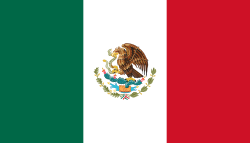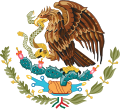| Organization | Description | Home country | Countries of Organization's participants | Official Website |
|---|
| Advisory Committee on International Economic Policy (ACIEP) | | U.S. | U.S. | ACIEP membership |
| Annexation.ca | A movement dedicated to the exploration of the potentialities for a democratic annexation of Canada to the USA. | Canada | Canada & U.S. | Annexation.ca |
| Border Environment Cooperation Commission (BECC) | Aims to promote binational health and environmental projects along the U.S.-Mexican border and partners with the North American Development Bank (NADB). | Mexico & U.S. | Mexico & U.S. | BECC |
| Canadian Council of Chief Executives | | Canada | | CCCE |
| Center for North American Studies (CNAS) at American University | Educates and promotes policy debates between governments about the North American Region. | U.S. | U.S. | CNAS |
| Center for U.S. and Mexican Law at University of Houston Law Center | A research center devoted to the independent, critical study of Mexican law and legal aspects of U.S. – Mexico relations. | U.S. | Mexico & U.S. | Center for U.S. and Mexican Law |
| Digital Government Society of North America | | U.S. | Canada, Mexico, United States (potentially) | DGSNA [21] ∙ DGRC [22] |
| North American Aerospace Defense Command (NORAD) | Handles aerospace warning and control for North America and awareness of activities in U.S. and Canadian maritime areas and as well as inland waterways. | U.S. | Canada and U.S. | NORAD [23] |
| North American Center for Transborder Studies (NACTS) at Arizona State University | A center for scholars regarding the trilateral issues in North America. | U.S. | | NACTS [24] |
| North American Development Bank (NADB) | Created under the guidance of NAFTA to focus on environmental issues along the U.S.–Mexican border and partners with the Border Environment Cooperation Commission (BECC). | | Mexico and U.S. | NADB [25] |
| North American Forum | | | | North American Forum [26] |
| North American Forum on Integration | | Canada | Canada, Mexico & U.S. | NAFI [27] |
| The North American Institute (NAMI) | | | | NAMI [28] |
| North American Integration and Development (NAID Center) | | | | NAID [29] |
| United States Northern Command (USNORTHCOM) (a.k.a. NORAD-U.S. Northern Command Command Center) | A "central collection and coordination facility for a worldwide system of sensors designed to provide the commander and the leadership of Canada and the U.S. with an accurate picture of any aerospace threat" | U.S. | U.S. | USNORTHCOM [30] |
| Security and Prosperity Partnership Of North America (SPP) | Leads an agenda "to enhance the competitive position of North American industries in the global marketplace", [31] prevent & respond to threats in North America, and "ensure the streamlined movement of legitimate travelers and cargo across our shared borders" [32] | | Canada, Mexico and U.S. | SPP in Canada [33] ∙ SPP in Mexico [34] ∙ SPP in the U.S. [35] |
| Transatlantic Economic Council (TEC) | | | | TEC∙ EU-USA TEC [36] |
| United North America | A non-profit organization that advocates the admittance of Canadian provinces into the United States as new states of the Union. | Canada | Canada | United North America [37] |





